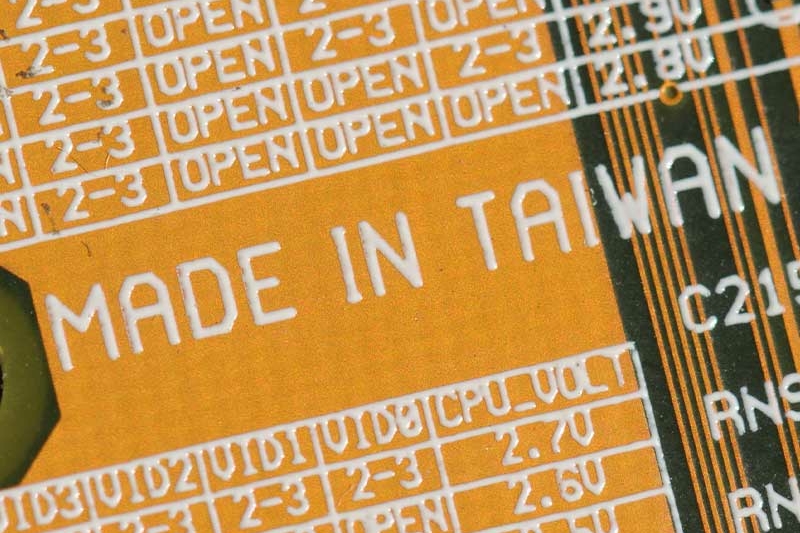Europe again has the technology sector in its target zone
Guidance for Taiwanese companies

2020 witnesses a year filled with significant changes to all of our professional and personal lives.
Businesses and individuals worldwide are witnessing significant geopolitical fractures that have resulted in significant changes to various aspects of the global legal landscape, such as financing, trade, sanctions, foreign direct investment (FDI), intellectual property and antitrust. The COVID-19 pandemic has also negatively affected many aspects of deal-making, with general corporate finance transactional activity levels significantly lower than last year. On the other hand, distressed M&A, restructuring and financing activities are on the upswing, as is the case for investments in sectors that are primed to take center stage in a post-COVID-19 world.
Taiwanese companies and financial institutions are not immune to these global developments. Indeed, Taiwan's unique positioning in the global supply chain and other areas warrants special attention to some of these issues faced by other players globally.
While the COVID-19 pandemic has prevented us from seeing clients in person in Taiwan this year, we continue to focus on the latest legal issues and trends affecting our Taiwanese clients and other contacts globally. Through a series of webinar presentations and online meetings, our objective this year is to deliver to you updates on the following key topics of interest:
We hope this report and our recent webinars are helpful in navigating a swiftly changing landscape.
Guidance for Taiwanese companies

What Quanta Storage and Qualcomm mean for Taiwan's businesses

By Farhad Jalinous and Tilman Kuhn
Already burgeoning, foreign direct investment regulations worldwide are bulking up still more in response to emerging threats

A protective strategy includes understanding new US rules, identifying the risk factors and taking proactive steps to prevent problems

By Bijal Vakil and Henry Huang
Successful defense strategies for Taiwanese businesses

By Alexander McMyn and Eugene Man
What next for Taiwanese banks and businesses?

By Steven Sha and Daniel Yeh
What they mean for investors in the region


What they mean for investors in the region
The COVID-19 pandemic has taken a toll on the world's economies and investment activity in 2020—including Asia-Pacific. This black swan event has exacerbated previous market threats, including rising geopolitical tensions, regulatory protectionism and tumbling fundraising, suggesting a potentially broader stagnation in 2020 and beyond.
In a time of unprecedented challenges, many corporations and investors in Asia-Pacific are looking for both shelter and new opportunities in all directions. Despite a notable decline in Asia-Pacific cross-border M&A overall, private equity (PE) firms have still been able to capitalize on investment opportunities through the region in sectors that have both thrived and withered during the pandemic.
Asia-Pacific M&A stalled during the first half of 2020, with a 17 percent decrease in deal value (year-on-year), reaching the lowest level since the same period in 2013.13 Taiwan M&A activity, in particular, nearly halved.
This is attributable to a range of factors, most notably the global pandemic, which ravaged many industries and raised roadblocks to deal-making fundamentals. Travel restrictions, quarantine requirements and similar issues posed serious hurdles to even basic activities necessary to develop many transactions—such as management meetings, on-site diligence, and signing and exchanging physical documents. In addition, escalating trade and political tensions and uncertain credit and financial markets played significant roles among the constellation of factors that drove more cautious investing.
Nevertheless, despite these challenges, a number of niche opportunities still emerged.
Depressed valuations have led to waves of take-private transactions, share buybacks, private investments in public equity (PIPEs) and similar opportunistic deals across public markets in Hong Kong and the US. In particular, US-listed People's Republic of China (PRC) companies have become popular candidates for sale by controlling shareholders, especially in light of increasing scrutiny of such issuers by the US Securities and Exchange Commission (SEC) and other regulatory authorities. Distressed and "special situations" deals, such as bankruptcy and insolvency restructurings reminiscent of the 2009 global financial crisis have also increased many-fold. Corporate divestitures, carve-outs and similar shedding of corporate dead weight have also become prevalent where belt-tightening is warranted.
In addition, smaller, minority and growth investments that are generally less risky and do not require access to credit markets have become more pervasive. Several sectors have notably flourished in the current market environment – such as technology, healthcare, online education, software as a service (SaaS) and infrastructure – creating attractive capital-raising or exit opportunities for businesses and investment opportunities for PE funds looking to deploy excess dry powder.
Even though Taiwan cross-border activity has declined, the pandemic has boosted many larger Taiwanese industries (semiconductors, other electronics, light manufacturing, offshore wind, etc.), positioning these businesses for deal opportunities if deemed desirable.
PE buyouts experienced some growth in the first half of 2020, buoyed by a combination of the sector deals mentioned above, an excess of dry powder that has amassed slowly over the last few years and investors seeking niche opportunities, including deals funded by equity (given uncertain or insufficient credit markets). Overall, we saw funds taking a cautious and opportunistic approach to investing.
However, PE exits all but dried up during the first half of 2020, having dropped 90 percent by deal count and 50 percent by deal value in comparison to the previous year14. Fewer exits have translated to an evaporation of cash flow to limited partners and accordingly resulted in a slowdown in PE fundraising (which was 45 percent lower in 2019, compared to the previous five-year average15.
In this uncertain market, we saw funds shift their focus to more actively managing and growing existing portfolios (rather than force exits at potentially depressed valuations) and optimizing their debt and liquidity needs, priming portfolios for future sales.
As 2019 ended, record levels of dry powder and ever-increasing valuations prescribed a frothy, seller-driven PE marketplace, though overshadowed by the uncertainties of the PRC-US trade war, Brexit, stricter implementation and enforcement of regulations by the Committee on Foreign Investment in the United States (CFIUS), increasing global scrutiny of foreign direct investments and fiercer competition for deals among investment managers.
The COVID-19 pandemic crystallized many of these uncertainties with escalating PRC-US tensions, higher geographical barriers among many countries, global macro-economic concerns and a shrinking supply of PE-owned portfolio targets for sale. At the same time, new challenges have arisen, including increased SEC actions targeting US-listed PRC companies and geopolitical instability both in Asia-Pacific and the US. Taiwan, in particular, could suffer significant collateral damage from many of these factors.
So what do all these mean for 2020 and beyond? The theme of more cautious investing while refocusing on internal growth, combined with fewer "traditional" sales processes and more bespoke or niche opportunities, indicate a broader shift towards a buyer's market, or at least a market where bilateral or proprietary transactions become more prevalent.
Looking towards Taiwan in particular, for mature businesses that have thrived in the pandemic and seek a future partner or a generational change-driven exit, the current environment may be optimal to take advantage of opportunistic PE funds sitting on a mountain of equity ready to deploy.
13 Mergermarket
14 Based on data from Mergermarket
15 Bain & Company
This publication is provided for your convenience and does not constitute legal advice. This publication is protected by copyright.
© 2020 White & Case LLP